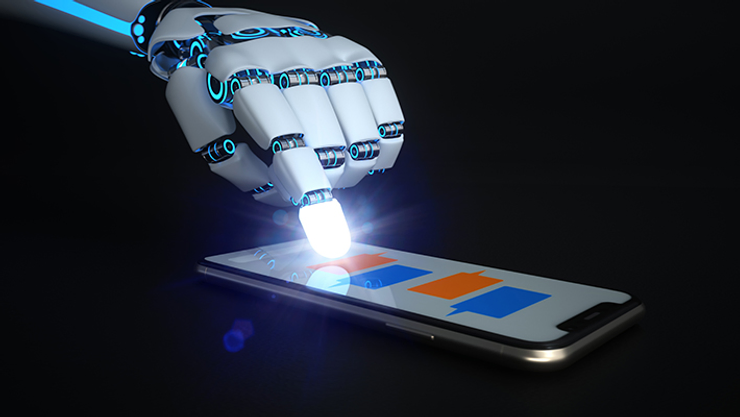What is a BOT?
In general terms, a bot, short for “robot,” is a software application or program that automates tasks that are typically performed by humans. Bots are designed to execute specific functions or simulate human interactions, often on the internet.
Bots can range from simple to complex, depending on their purpose and functionality. Here are a few common types of bots:
- Web Crawling Bots: These bots, also known as web spiders or web crawlers, are used by search engines to discover, crawl, and index web pages on the internet. They follow links, analyse website content, and collect data to help search engines provide relevant search results.
- Chatbots: Chatbots are designed to interact with humans through text or voice-based conversations. They are commonly used in customer support, online messaging platforms, or websites to provide information, answer queries, or assist with tasks. Chatbots can use pre-defined responses or utilise artificial intelligence to understand and respond to user input.
- Social Media Bots: Social media platforms often have bots that perform specific functions, such as posting updates, sharing content, or engaging with users. Some social media bots are designed for legitimate purposes, such as scheduling posts or providing automated updates, while others may be used for spamming or manipulating social media activity.
- Gaming Bots: Bots can be programmed to play games, either against humans or other bots. In some cases, these gaming bots are created to provide challenge or competition, while in others, they may be used for cheating or exploiting game mechanics.
- Malicious Bots: Unfortunately, there are also bots designed for malicious purposes, such as spreading malware, conducting DDoS (Distributed Denial of Service) attacks, or engaging in phishing scams. These bots are often associated with cybercriminal activities and aim to exploit vulnerabilities or harm individuals, organisations, or systems.
It’s important to note that not all bots are harmful or unethical. Many bots serve practical purposes and can improve efficiency and automation in various industries. However, it’s crucial to differentiate between bots that provide value and those that engage in malicious or deceptive activities.
Overall, a bot is a software application that automates tasks, interacts with users or systems, and can perform a wide range of functions depending on its programming and purpose.

What is a BOT in SEO?
In the context of SEO (Search Engine Optimisation), a bot refers to a software application that is designed to perform automated tasks on the internet. These bots are also commonly known as web crawlers, spiders, or robots.
Search engine bots, such as Googlebot (Google’s crawler), Bingbot (Bing’s crawler), or Baiduspider (Baidu’s crawler), are examples of bots used in SEO. Their primary purpose is to crawl and index web pages, which means they visit websites and analyse their content, structure, and links. These bots follow hyperlinks to discover new pages and update search engine indexes with the latest information.
SEO bots play a crucial role in determining the visibility and ranking of web pages in search engine results.
They collect data about websites and use various algorithms to evaluate factors such as keyword relevance, website quality, user experience, and backlink profiles. Based on this analysis, search engines determine how to rank web pages for specific search queries.
It’s important to note that not all bots are beneficial for SEO. Some bots may engage in unethical practices, such as scraping content from other websites, spamming forums or comment sections, or engaging in link schemes.
These activities are often associated with black hat SEO techniques and can result in penalties or negative consequences for the website engaging in them.
In summary, a bot in SEO refers to a software application, typically operated by search engines, that crawls and indexes web pages to determine their relevance and ranking in search engine results.

Well known "Bots"
Googlebot: As mentioned earlier, Googlebot is Google’s web crawling bot. It explores the internet, discovers web pages, and indexes them for Google’s search engine.
Siri: Siri is a voice-activated virtual assistant developed by Apple. It uses natural language processing and machine learning to interpret and respond to user commands and queries on Apple devices.
Alexa: Alexa is Amazon’s virtual assistant, primarily associated with their smart speaker devices, such as Amazon Echo. It can perform tasks like answering questions, playing music, setting reminders, and controlling smart home devices.
Twitterbot: Twitterbot is a generic term for various bots operating on the Twitter platform. Some Twitterbots automatically retweet or like specific content, while others provide automated updates or deliver customised information to users.
ChatGPT: ChatGPT, like the one you are interacting with right now, is a language model developed by OpenAI. It can engage in text-based conversations and assist with answering questions, providing information, or generating text.
Weather bots: Various weather services and platforms employ bots to provide weather updates and forecasts. Users can interact with these bots to obtain current weather information, forecasts, or alerts.

Social Media Bots
Social media bots are software applications designed to automate tasks on social media platforms. They interact with users, post content, engage with other accounts, and perform various actions on social media.
Social media bots can be programmed to perform specific functions, such as liking, commenting, following, or sharing content.
Here are a few types of social media bots:
Content Distribution Bots: These bots automatically post and share content on social media platforms. They can be used to promote articles, videos, or products by scheduling posts or sharing updates from RSS feeds.
Engagement Bots: These bots are designed to engage with other users’ content by automatically liking, commenting, or following accounts. They aim to increase engagement metrics or gain visibility for specific profiles.
Customer Support Bots: Some businesses use bots to handle customer inquiries and support on social media platforms. These bots can provide automated responses to common queries or direct users to relevant resources.
Spam Bots: Unfortunately, there are also malicious bots known as spam bots. They may create fake accounts, send unsolicited messages, or post spam content on social media platforms.
It’s important to note that social media platforms often have policies and guidelines regarding the use of bots. Some platforms restrict or penalise the use of bots that engage in spammy or deceptive activities. Therefore, it’s essential to use social media bots responsibly and in compliance with platform rules.
While bots can automate certain tasks on social media, it’s important to maintain genuine human interactions and avoid using bots to deceive or manipulate users.











We have been working with Amax Marketing for the last few weeks and have already been impressed with the results we've seen.
As experts in outreach and digital PR, we knew we'd be in safe hands. We are looking forward to the coming months, and getting some fantastic results!